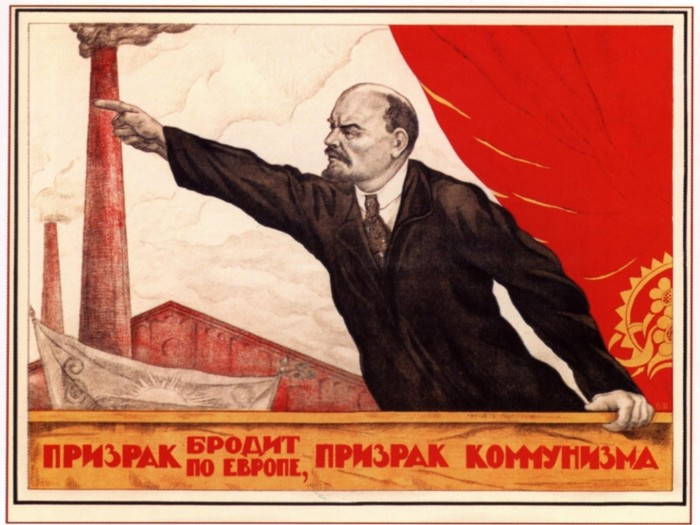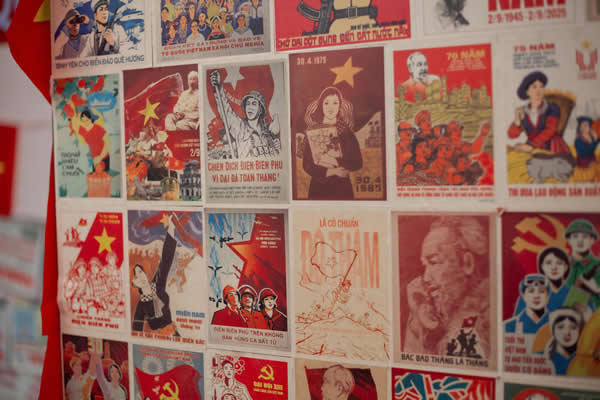In his book on the history of propaganda, the French philosopher Jacques Ellul explored the techniques used by political and religious powers to influence public opinion. He distinguished three main periods before the emergence of modern propaganda, which already involved corruption, censorship and the ideological instrumentalisation of the press.
Until the 15th century, propaganda was linked above all to the figure of the propagandist, i.e., to individuals or institutions that influenced opinion. In ancient Rome, public speaking was a powerful tool used to mobilise the people, manipulate the masses, and influence political decisions. When it came to voting, Roman orators resorted to less-than-noble means, such as electoral bribery. Election posters, extolling candidates’ virtues, and disseminating political information were also among primitive forms of propaganda.
Rome also used powerful symbols, such as coins bearing the emperor’s effigy, to reinforce its power and spread a message of grandeur and invincibility. Under the Roman Empire, propaganda took on more structured forms. The myth of Rome, which put forward the image of a divine, democratic and virtuous empire, was propagated through speeches and monuments. Alongside this, Roman power instituted information systems such as the Acta Diurna, which were posters designed to inform the population about new policies and laws. Although this information was intended to be objective, it served propaganda purposes.
Later, when the emperor Constantine adopted Christianity, propaganda changed direction and became a means of promoting Christian values in the face of ancient pagan beliefs. This propaganda phenomenon was primarily confined to the educated elite and rarely reached the popular masses. In the late Roman Empire, propaganda gradually disappeared as the means of dissemination became increasingly centralised around the state’s authority.
The Reformation and the printing press
In the 16th century, the invention of the printing press revolutionised the way ideas were disseminated. The Protestant Reformation, led by figures such as Luther, extensively used the printing press to disseminate its criticism of the Catholic Church and promote Protestant ideas. Pamphlets, tracts and brochures made it possible to reach a broad audience and extend the scope of propaganda to the general population. Reformist ideas were not confined to a small circle of intellectuals. Still, they were disseminated among the working classes, thanks in particular to the increasing accessibility of the written word due to rising literacy rates.
Faced with this phenomenon, the Catholic Church introduced censorship to limit the influence of reformist propaganda. At the same time, supporters of the Reformation continued their efforts to spread the word through pamphlets, songs, plays, and popular comedies that conveyed Protestant messages.
This marked a turning point: thanks to the printing press, propaganda was being disseminated on a mass scale for the first time. At the same time, the Church set up structures such as the Congregatio de Propaganda Fide, which was responsible for disseminating religious texts in Protestant countries and controlling public thought while continuing to censor writings deemed subversive.
The Monarchy and the French Revolution
From the 17th century onwards, the French monarchy adopted more systematic propaganda methods, particularly under Louis XIV, who used the press to spread the image of royal power. By controlling the gazettes and funding publications favourable to his reign, Louis XIV managed to manipulate public opinion and reinforce his authority. The royal power used the press to create an official version of reality, excluding any unfavourable information. Using the press to disseminate a political message became a central tool of propaganda, as it enabled the powers that be to structure opinion through a widely accessible channel.
During the French Revolution, propaganda took a more radical and partisan turn. The various revolutionary groups, whether Jacobin, Girondin or Royalist, sought to rally public opinion to their cause. The press became an ideological battleground, with newspapers giving voice to the various parties.
Patriotic newspapers and revolutionary pamphlets were central in mobilising the masses, calling for action and naming the common enemy. The revolutionary government used the press as an instrument of control while closely monitoring publications. This period also saw the emergence of largescale state propaganda, with pamphlets and actions by secret societies aimed at spreading revolutionary ideas beyond France’s borders.
Napoleon and State propaganda
Napoleon used the press to publicise his military victories and shape his image as an emperor. The press was placed under strict control, with official newspapers broadcasting the government’s messages while opposition newspapers were censored. Napoleon himself regularly intervened to direct the content to be published, creating directed and centralised propaganda. He saw journalists as agents of the state, responsible for promoting his image and disseminating information favourable to his regime.
At the same time, Napoleon used the Catholic Church as a propaganda tool, seeking to rally believers to his cause. He consolidated his power by strengthening the links between Church and State while spreading an image of divine legitimacy. This propaganda strategy was accompanied by severe repression of the opposition press, with police monitoring newspapers and dissident publications. After Napoleon’s fall, the press regained a central role, particularly under the Restoration, where it defended both freedoms and the ideals of the Empire.
The 19th century and the rise of nationalism
In the late 19th and early 20th centuries, propaganda took a more ideological and nationalist turn. Governments used propaganda to reinforce national identity and arouse patriotic feelings. Themes such as anti-Germanism, colonialism and anti-Semitism were exploited to rally the masses to national causes, particularly during the Franco-Prussian War and at the start of the First World War. Schools became a key instrument of Republican propaganda, inculcating the nation’s and the Republic’s values through history, patriotic songs and school events.
The press also played a key role in creating a national consciousness, becoming increasingly partisan, especially in times of crisis. During the First World War, propaganda was institutionalised on both sides of the conflict, using psychological warfare strategies to influence public opinion. Specialised newspapers were created to disseminate propaganda in neutral and occupied countries, sometimes using private information to attract readers.

Under Lenin’s leadership, Russian revolutionary propaganda also applied these principles, using all available means to mobilise the masses and promote communism while incorporating the notion of popular agitation.
Propaganda was not limited to the political sphere but aimed at a general subversion of bourgeois civilisation and capitalist society. This included an attempt to psychologically modify the individual, his ideology and his underlying structures because Lenin believed that the new socialist man would not be born spontaneously but would have to be formed by a directed education and an ideological environment.




